Abstract
Nonsaturating light at 600 or 436 nanometers was used to excite specifically phycocyanin or chlorophyll a, respectively, both of which participate in light capture in photosystem II of Cyanidium caldarium. The ratio of absorption of light by phycocyanin to chlorophyll in photosystem II in this organism is >20 at 600 nanometers and ≤0.2 at 436 nanometers.
The distribution of the absorbed light energy at these two wavelengths was followed by detecting the flash yields of O2 during each illumination. We found that light absorbed by phycocyanin was transferred to only half of the reaction centers of photosystem II. This heterogeneity of energy distribution arises because only half of the centers and their associated antennae of 40 chlorophyll a are attached to phycobilisomes.
Full text
PDF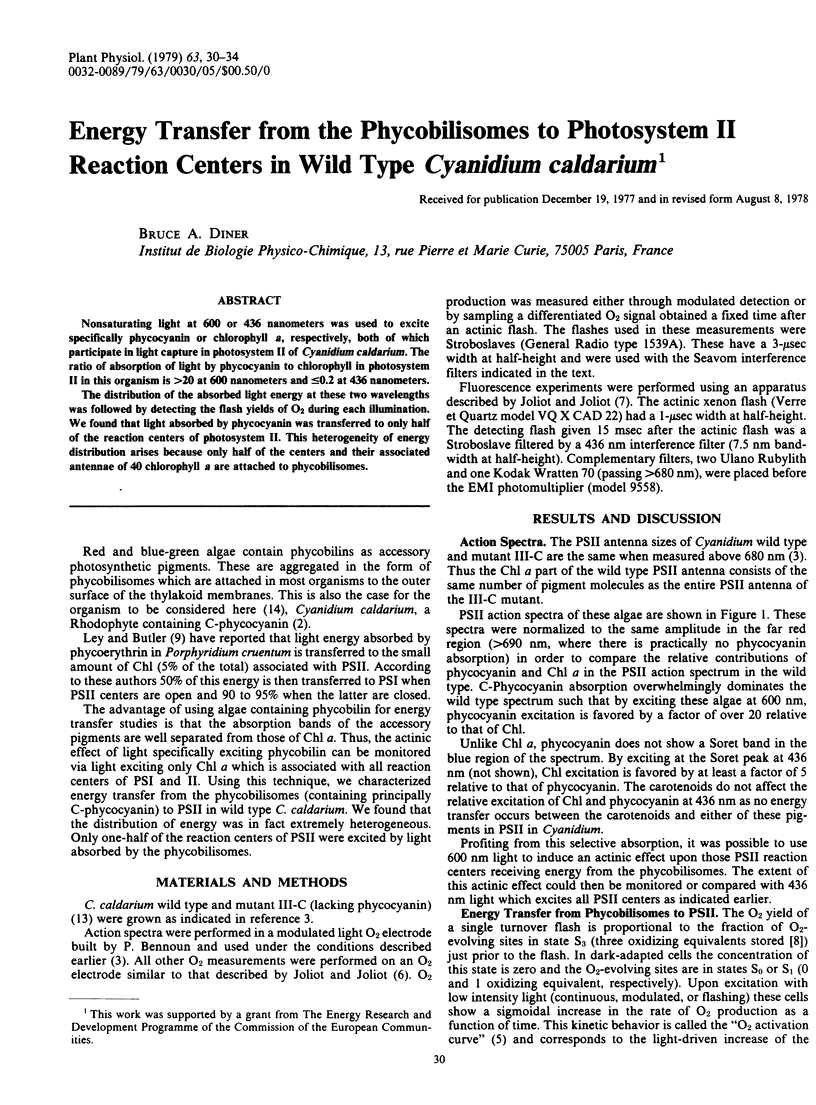
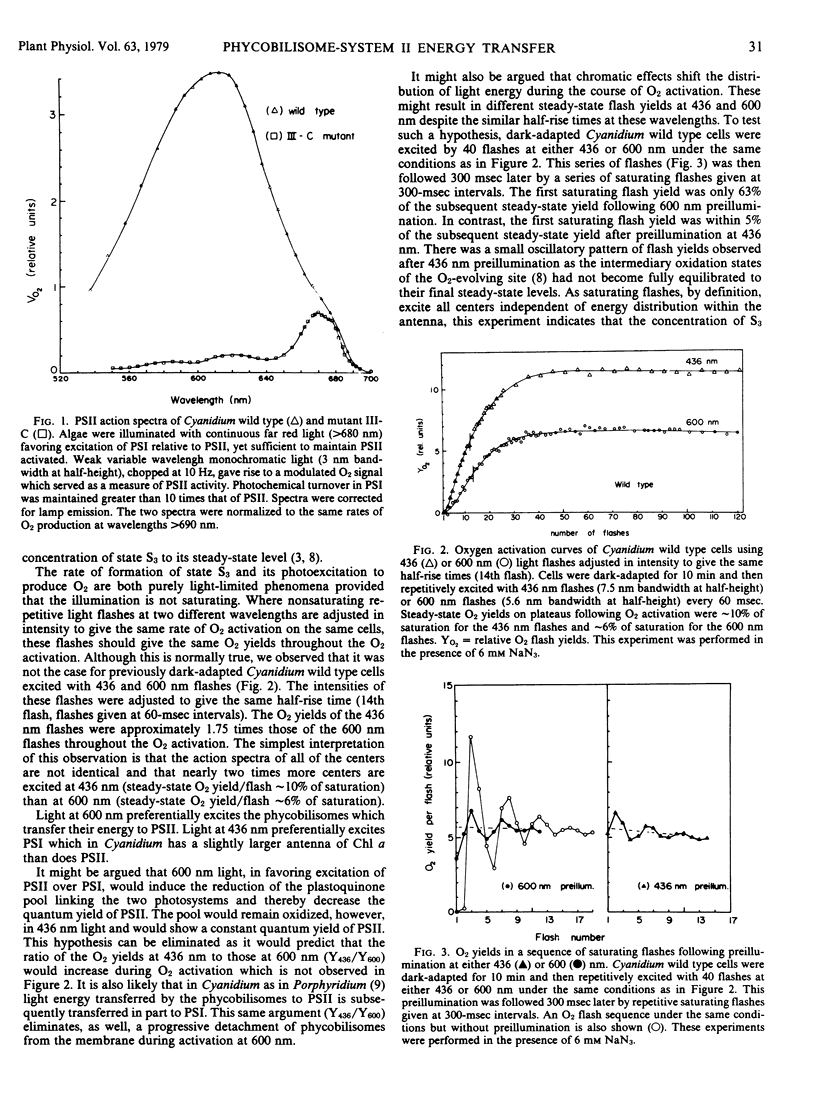
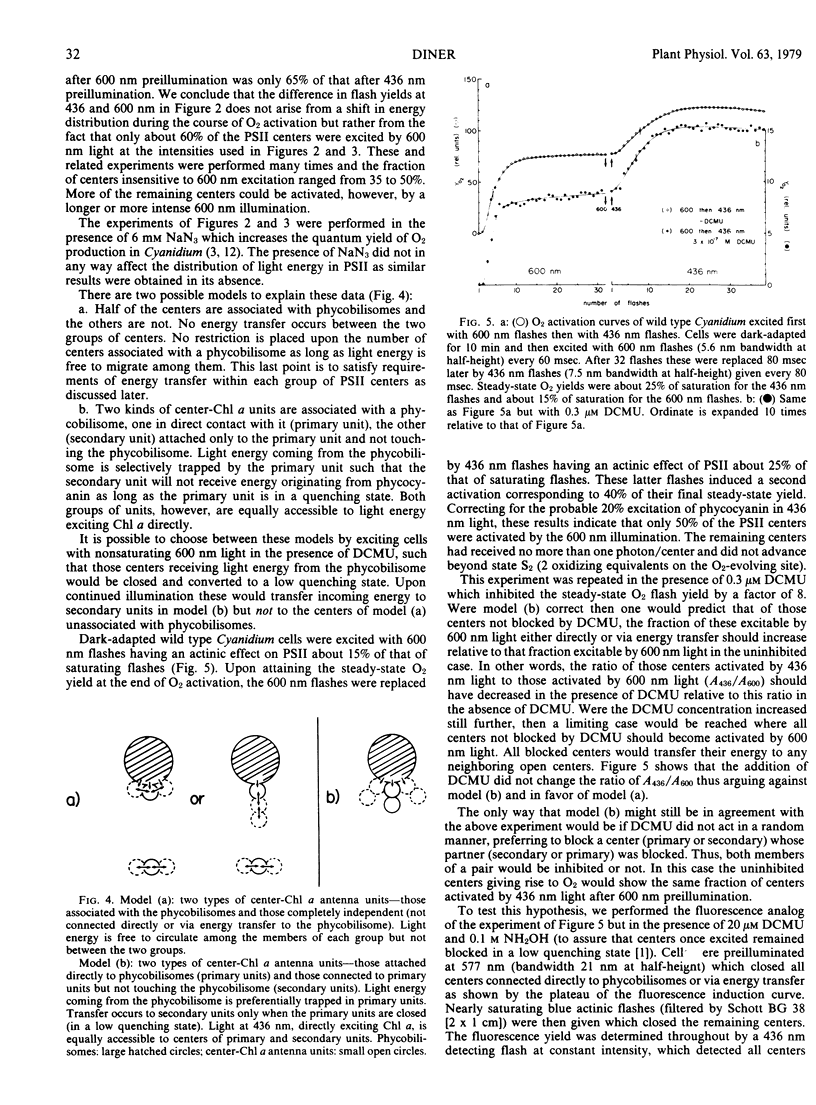
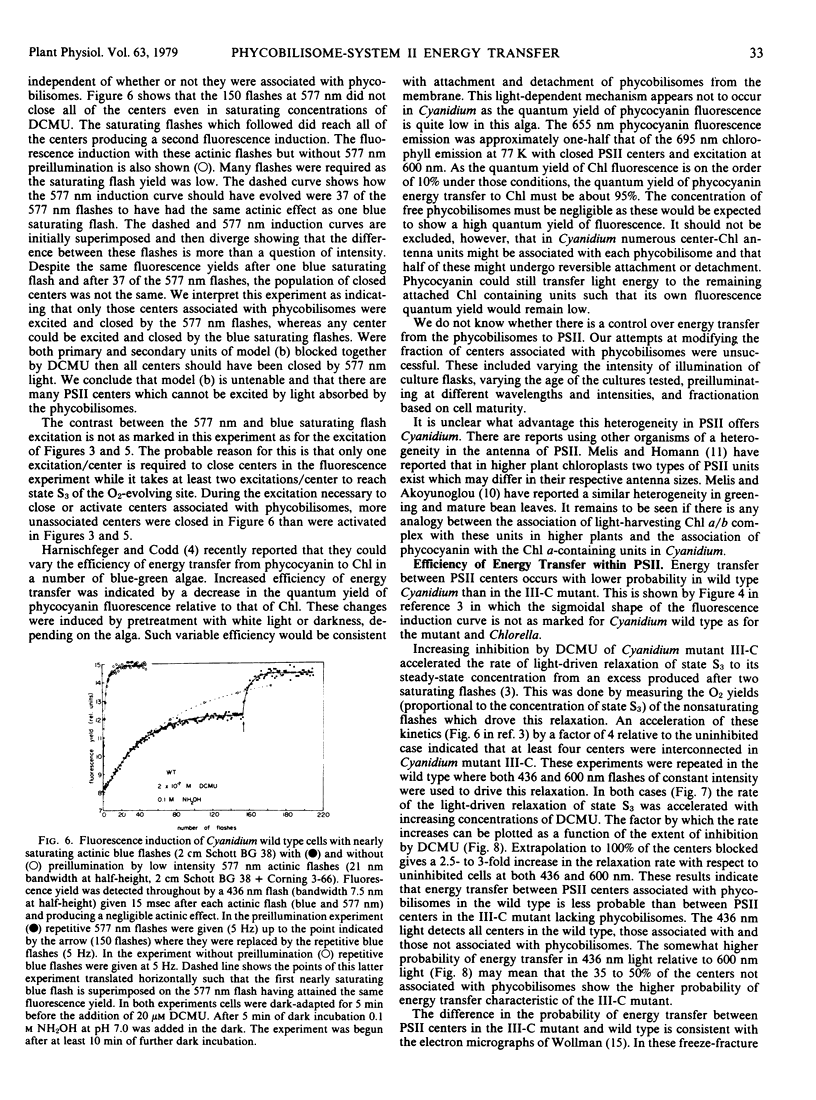
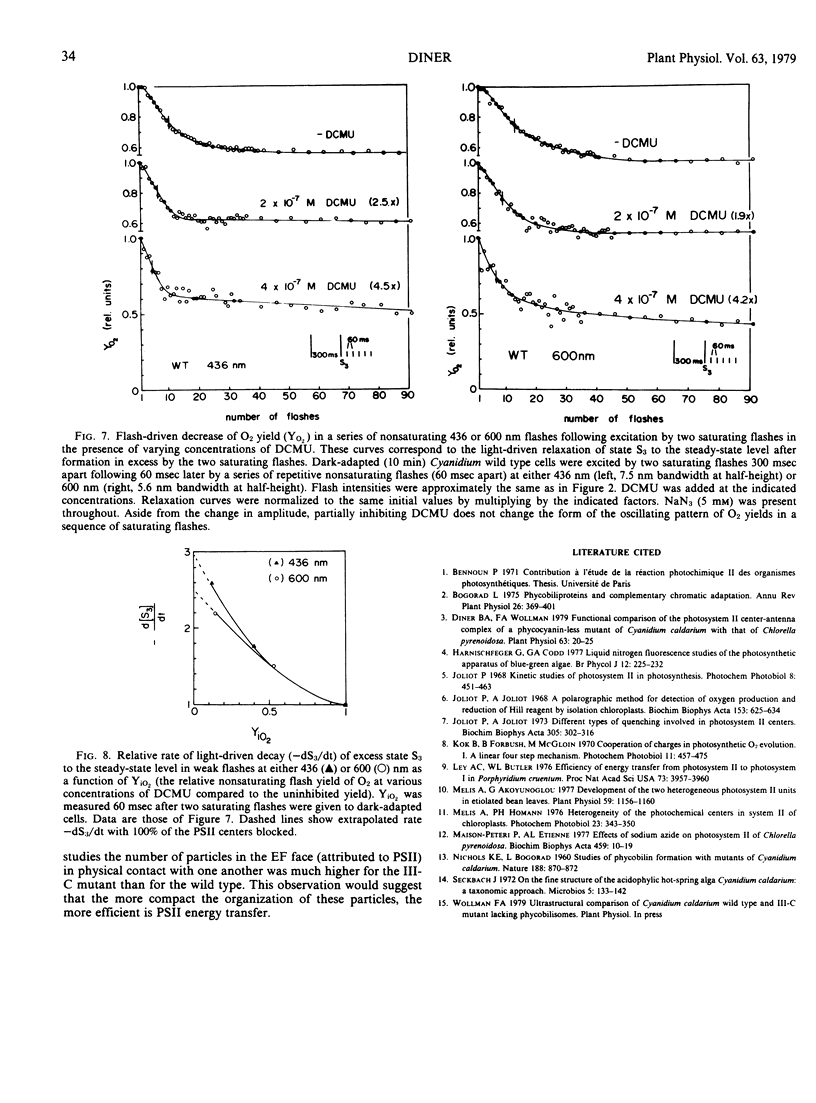
Selected References
These references are in PubMed. This may not be the complete list of references from this article.
- Diner B. A., Wollman F. A. Functional Comparison of the Photosystem II Center-Antenna Complex of a Phycocyanin-less Mutant of Cyanidium caldarium with That of Chlorella pyrenoidosa. Plant Physiol. 1979 Jan;63(1):20–25. doi: 10.1104/pp.63.1.20. [DOI] [PMC free article] [PubMed] [Google Scholar]
- Joliot P., Joliot A. A polarographic method for detection of oxygen production and reduction of hill reagent by isolated chloroplasts. Biochim Biophys Acta. 1968 Apr 2;153(3):625–634. doi: 10.1016/0005-2728(68)90190-4. [DOI] [PubMed] [Google Scholar]
- Joliot P. Kinetic studies of photosystem II in photosynthesis. Photochem Photobiol. 1968 Nov;8(5):451–463. doi: 10.1111/j.1751-1097.1968.tb05889.x. [DOI] [PubMed] [Google Scholar]
- Kok B., Forbush B., McGloin M. Cooperation of charges in photosynthetic O2 evolution-I. A linear four step mechanism. Photochem Photobiol. 1970 Jun;11(6):457–475. doi: 10.1111/j.1751-1097.1970.tb06017.x. [DOI] [PubMed] [Google Scholar]
- Ley A. C., Butler W. L. Efficiency of energy transfer from photosystem II to photosystem I in Porphyridium cruentum. Proc Natl Acad Sci U S A. 1976 Nov;73(11):3957–3960. doi: 10.1073/pnas.73.11.3957. [DOI] [PMC free article] [PubMed] [Google Scholar]
- Maison-Peteri B., Etienne A. L. Effects of sodium azide on photosystem II of Chlorella pyrenoidosa. Biochim Biophys Acta. 1977 Jan 6;459(1):10–19. doi: 10.1016/0005-2728(77)90003-2. [DOI] [PubMed] [Google Scholar]
- Melis A., Akoyunoglou G. Development of the Two Heterogeneous Photosystem II Units in Etiolated Bean Leaves. Plant Physiol. 1977 Jun;59(6):1156–1160. doi: 10.1104/pp.59.6.1156. [DOI] [PMC free article] [PubMed] [Google Scholar]
- Melis A., Homann P. H. Heterogeneity of the photochemical centers in system II of chloroplasts. Photochem Photobiol. 1976 May;23(5):343–350. doi: 10.1111/j.1751-1097.1976.tb07259.x. [DOI] [PubMed] [Google Scholar]
- NICHOLS K. E., BOGORAD L. Studies on phycobilin formation with mutants of Cyanidium caldarium. Nature. 1960 Dec 3;188:870–872. doi: 10.1038/188870b0. [DOI] [PubMed] [Google Scholar]
- Seckbach J. On the fine structure of the acidophilic hot-spring alga Cyanidium caldarium: a taxonomic approach. Microbios. 1972 Mar-Apr;5(18):133–142. [PubMed] [Google Scholar]


